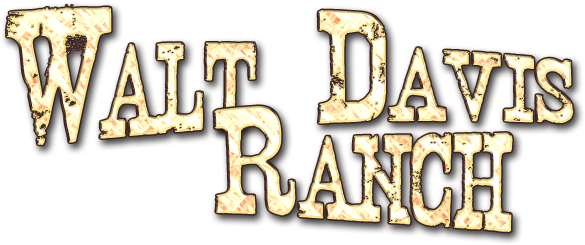
Walt Davis - Author, Agricultural Consultant, and Rancher

Walt Davis spent fifty something years as a working rancher with interests in west Texas and in southeast Oklahoma. After almost going broke following the advice of high tech agriculture experts, he spent years developing a biological approach to ranching based on planned grazing management. Biodiversity exploded under the new management with beneficial organisms from dung beetles to earthworms increasing as pest organisms decreased. Expenses dropped as production increased so that the ranch was consistently profitable. For the last twenty years or so, he has worked with land owners, ranchers and both public and private organizations as a management consultant, advisor and teacher. He is in demand as a speaker and over the years has spoken to a diverse collection of audiences on his passion for good land management. He is a past president of Holistic Management of Texas and of the Oklahoma Land Stewardship Alliance and is vitally interested in promoting land use that is profitable, sustainable and user friendly.
Walt is one of the people featured in the recently published book Texas Legacy Project: Stories of Courage and Conservation. A video of the interview with Walt for this book can be seen at the Texas Legacy Project website.
Walt has demonstrated on his own operations and on client operations that ranching and farming can be financially profitable while improving the health of the land. He is the author of numerous articles published in the Farm Progress family of magazines and in The StockmanGrassFarmer. He has published three books, How to Not go Broke Ranching, A Gathering at Oak Creek, and The Green Revolution Delusion and has three more in the works.
I was born into a west Texas ranching family in 1938. My family has been involved with livestock for many years with one branch turning out successful stock men for at least five generations. There have been scurrilous rumors that some of my ancestors in Scotland and later in what would become Texas were not too concerned with the origin of the stock that they drove to market but I feel certain that there were good explanations for any English or Mexican brands that were mixed in the bunch.
I grew up on a small west Texas ranch that was run in very much the same manner that my Grandfather and great Grandfather had operated. Grazing was more or less continuous with young being born mostly from mid to late spring and the livestock was expected to take essentially all of their nutrition from the land as grazed forage. Salt and minerals were supplied but no hay or other winter supplementation was provided. The exception to this was when cows that were bred to calve in the winter so as to escape screwworm infestations in the baby calves; these cows were given a little protein in the form of cottonseed cake. The heaviest work load was finding and doctoring screwworm cases. We spent many long days riding, looking for and doctoring screwworm cases; to prevent losing animals, someone had to see every head of stock at least every three or four days during screwworm season which started in April and lasted until we had a killing frost. About the only upside to this was that we got to be pretty good hands with a rope and our horses got lots of work.
I went off to college in 1956 to study animal husbandry and soon learned how poorly my ancestors had been doing things for the last two hundred years or so. In December of 1961 I left Texas A&M College after five and a half years of under graduate and graduate work in animal husbandry and animal breeding and took over the management of the family ranch in south east Oklahoma. At this point, fresh out of college, there was very little that I did not know about the ranching business. This golden period of enlightenment lasted maybe six months and then my real education began.
By applying all of my newly gained knowledge and instituting all of the latest technology, in a few short years I took a profitable ranch to the edge of bankruptcy. We had very high production of beef, pecans and crops but our operating loan kept getting bigger and we were profitable only when the cattle market was at its highest point.
When I finally woke up, I started changing our program toward one that emphasized profit rather than production. It took a long time but we eventually developed a ranch that was consistently profitable and a whole lot more fun than when we were doing it right. I will use this website to share some of the changes we made along the way and also to have some fun.




